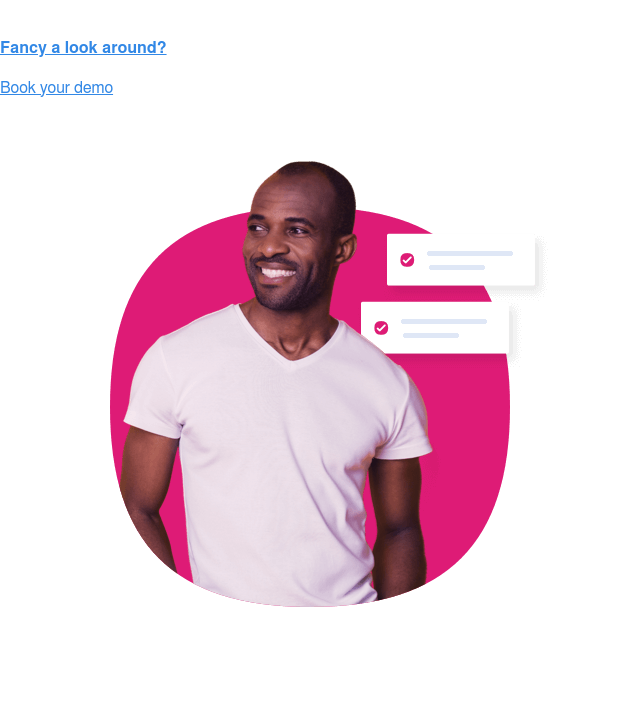What’s one thing every successful brand has in common? An authentic connection with its target consumer that goes beyond just a product or service.
As author Simon Sinek explains, “People don’t buy what you do; they buy why you do it.”
That’s where brand purpose comes in. In the simplest terms, brand purpose is a company’s reason for existing beyond just making money. It’s a framework that helps to influence important business decisions. But let’s not confuse it with brand mission or brand vision – even though they all play a big part in brand identity.
Think of it this way: brand vision is what inspires you, brand mission is what drives you, and brand purpose is what guides you.
The challenge becomes finding the right purpose; one that’s genuine, gets people on your side, but also makes commercial sense.
Here, we cut through the noise surrounding the consumer-led phenomenon that is brand purpose, outlining how consumer insights help shape, and maximize its impact.
The difference between brand purpose and CSR
On the surface, brand purpose may seem like just a new term for corporate social responsibility (CSR), but there are two key differences:
1. The focus isn’t always social or environmental issues
Although many brands are making strides to be intentional about their desire to do good, purpose is not exclusively about social or environmental initiatives, even though they’re undoubtedly the most powerful and commonly-seen examples.
It’s more about the fundamental essence of the business and where it’s heading.
For example, Crayola’s purpose is to “help parents and educators raise creatively-alive kids.” And how do they live up to this? By creating products and offering tools that inspire kids and “give colorful wings to the invisible things that grow in the hearts and minds of children.”
2. Purpose is baked into the branding
CSR often runs parallel to the business, has an allocated budget, and (in its worst form) exists only to offset a company’s negative impact. Purpose doesn’t come from the marketing department alone. It’s visible in all elements of the business, from promotional material to operations.
Put simply, where CSR is a commercial objective, purpose is a branding and culture objective.
Established brands need to find a higher purpose
Brand purpose has become a key talking point recently, so although CSR initiatives are becoming a top priority among established brands, building purpose into your business requires no small measure of brand strategy and analytical thinking.
It’s much harder to add strong brand purpose to older, established brands with legacy baggage.
Bill Bernbach, founder of Doyle Dane Bernbach, states, “A principal isn’t a principle until it’s cost you money.”
But for young brands that structure their whole business models around strong principles, they turn what could be a challenge for larger brands into an opportunity to improve customer experience, drive consumer engagement, and eventually bank more sales.
Purpose drives engagement
There’s no hiding the fact that brand purpose has to make financial sense. But when the intent is genuine and the impact is positive, commercial gain and brand loyalty will follow.
We know consumers want more than a transactional relationship with the brands they buy from and interact with.
Taking the luxury industry as an example, it’s clear that social responsibility is a huge deal to consumers. But people also want brands to be eco-friendly, listen to customer feedback, and make them feel valued.

With the right purpose, consumers will not only engage with your brand, they’re more likely to spread the word. Personal recommendations remain one of the most powerful awareness drivers.
Tread carefully: woke-washing
Consumers are also aware of false purpose and they’re quick to pick up on misguided purpose, even if the campaigns reflect genuine sentiments to create a positive impact.
The term ‘woke-washing’ describes work that promises to improve the world but doesn’t take real action. Brands without a clear purpose, value proposition, and brand voice who jump on the bandwagon are actually doing more damage than good.
Even though things like price, purchase process, and availability impact what consumers are buying, there are other factors that come into play like social issues, political issues, and commitment to sustainability – especially among younger generations.

With the pressure on to not only find a purpose, but the right purpose, brands should first seek to identify the trends that matter most to the people they’re targeting.
Steps to identifying your brand purpose
Finding the right brand purpose comes from listening to consumers at different levels.
While purpose shouldn’t be driven by commercial gain, to ensure you get the best results as a business it’s important to look beyond purchase behaviors alone towards who your target consumers are and what they value as people.
1. Get a local perspective
Why?
Sentiments change dramatically across borders and even within countries.
Local data enables you to identify elements in consumers’ personal lives that trigger actions (both from a commercial and wider perspective) so you can tailor your brand purpose statement and messaging accordingly.
How?
Regional data allows you to segment, compare, and analyze consumers in a specific area to see how their commercial and emotional responses relate to wider populations. Four key psychographic indicators should be highlighted in each region:
- Attitudes, interests, and self-perceptions
- Lifestyle motivations
- Perceptions on wider life
- Brand advocacy
2. Cross-reference with global trends
Why?
Knowing which trends carry the most momentum globally can help negate risks and maximize the potential impact of your message.
Global trend analysis will also help predict where specific trends are heading to ensure you don’t follow one that will fizzle out.
How?
With your local findings, compare them to wider, overarching trends to identify the most commonly-shared sentiments among your target market.
Assess how the findings fit with your global trends to ensure scalability, continuity, and longevity at a local level.
3. Explore industry-specific sentiments
Why?
Having identified trends and patterns on a local and global level, now you should look closely at consumers in your industry.
These consumers are the most valuable source of information on trends in the industry. And knowing them in granular data is pivotal to finding the purpose that resonates in your industry.
How?
Apply psychographic indicators to your specific market to find out how your consumers compare to the wider local and global populations.
4. Consult brand and competitor data
Why?
Brand data enables you to see your own brand’s reputation, alongside your competitors’.
Looking specifically at your own reception among your consumers and wider markets is the final layer to truly identify how to challenge perceptions, improve opinions, and drive positive sentiment.
How?
Custom surveys get to the heart of what consumers think about your brand and others in the industry by letting you ask the most pertinent questions, tailored to your needs.
Uncover their opinions on specific brands and competitors, what they value about brands with a strong purpose, and analyze their attitudes about life.
5. Test your ideas and concepts
Why?
When purpose is misguided, it can backfire. It’s important to ensure your message is one that people identify with, and is transparent in its intent.
How?
Testing consumers’ responses to specific concepts or campaigns that encompass your brand’s purpose will help you shape and reshape before launch.
Purpose starts at the top
Marylee Sachs, US CEO for brand consultancy Brandpie, says, “Purpose has always been integral to business, but the pandemic has caused business leaders at unprecedented scale to re-examine priorities across almost every area.”
With that in mind, it makes sense that 83% of CEOs either have or want a brand purpose, while 73% agree that brand purpose has an impact on most of their decision-making.
She continues, “The last three years will have lasting implications on how businesses operate and organize, and as a result most leaders have adopted purpose or are looking to bring purpose into their organizations to provide direction, to be a north star, for futureproofing the business.”
Woke-washing pollutes purpose
According to our trends analyst, Ben Butling: “Shoppers are increasingly tuned in to the world’s social and environmental hurdles, and this growing sentiment means there is an expectation for brands to take a stand too. As of Q3 2022, over 4 in 10 consumers want brands to be eco-friendly or socially responsible.”
But a whopping 78% of consumers have no confidence in big brands.
Brands suffer when they don’t take the time to move from awareness to action, and really walk the walk instead of just talking the talk. The bottom line is if you don’t mean what you say, it’s best not to pretend you do in your ads.
The takeaway
Brand purpose dictates which direction the brand story takes, gives the message momentum, and invites consumers to be part of the journey.
Purpose is not just a box-ticking exercise – it should support global progress. It’s also a necessary part of a compelling brand story.
Consumers hold the key to identifying the right purpose. One that balances the need to do good with commercial gain. After all, the two are not mutually exclusive.
With all brands under the microscope for their impact, a unique opportunity arises for those prepared to consider purpose deeply, look to understand what it is consumers want, and respond with a genuine, pragmatic approach.









